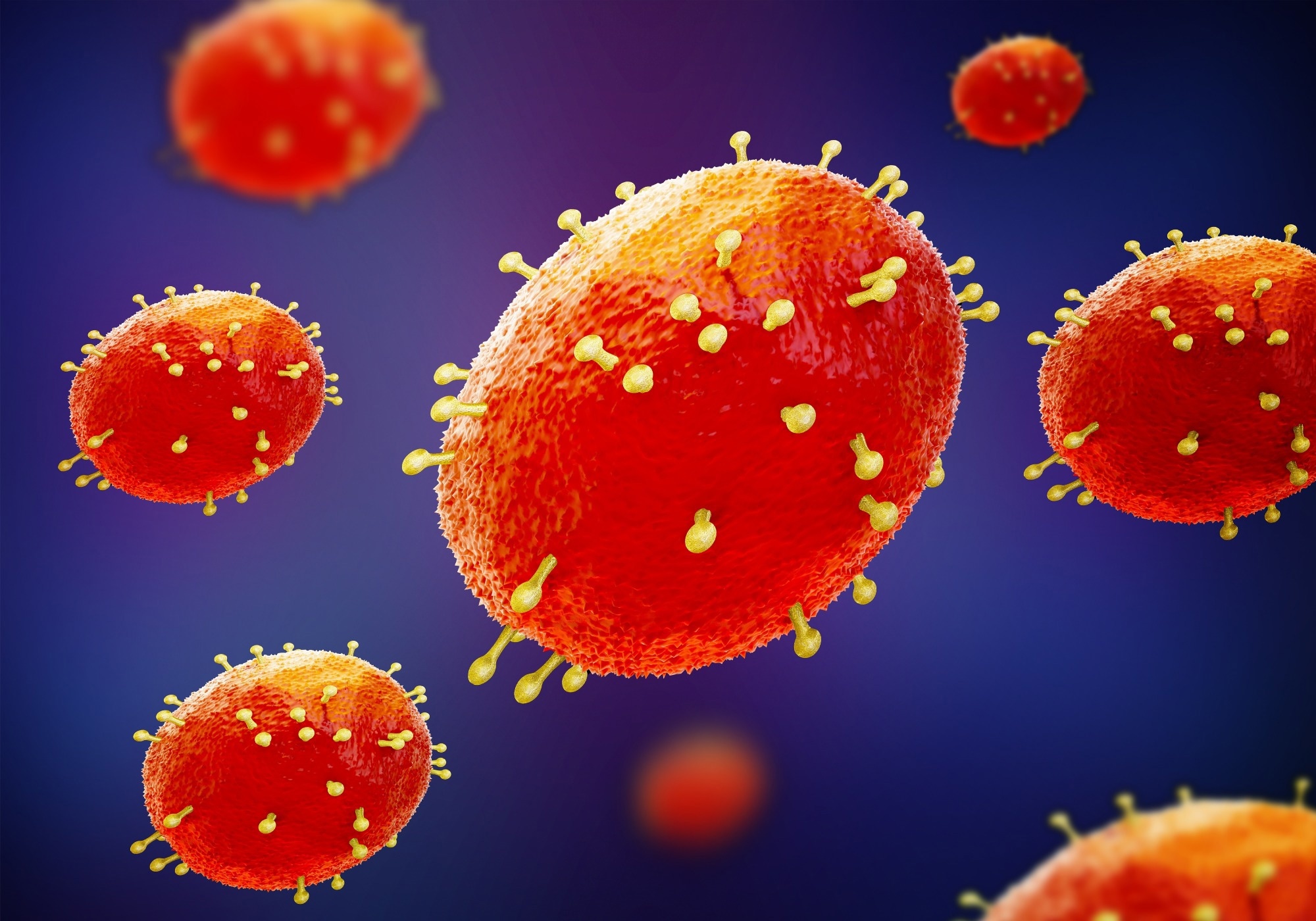In a recent study posted to the bioRxiv* preprint server, researchers determined the 1.8-Å resolution crystal structure of the H1 dual specific phosphatase (DSP) of monkeypox virus (MPXV) is crucial for viral replication, making it an attractive antiviral target.

MPX case counts continue to increase by the hour globally, warranting the need for the development of effective antiviral therapeutic agents and vaccines to improve global preparedness for MPX and mitigate viral infections. H1 is essential for MPXV replication as it de-phosphorylates proteins such as A14, F18, A17, and signal transducer and activator of transcription 1 (STAT1) and inhibits interferon (IFN) signaling. Importantly, HI is conserved among poxviruses and, thus, can be targeted to develop broad pan-antiviral agents.
About the study
In the present study, researchers studied the H1 crystal structure at 1.8 Å resolution to improve understanding of the MPXV H1-catalyzed dephosphorylation and develop a precise model for novel antiviral drug development.
The deoxyribonucleic acid (DNA) coding for H1 of the current 2022 MPXV outbreak MPXV_USA_2022_MA001 isolate was synthesized and cloned into an expression plasmid vector, verified by sequencing. H1 was expressed in Escherichia coli BL21 (or DE3) cells and H1-expressing bacteria were lysed, following which the protein was subjected to chromatography analysis.
H1 was crystallized using the sitting-drop vapor diffusion technique and the crystals were subjected to X-ray diffraction analysis. H1 structure was determined using the molecular replacement technique with the Vaccinia virus H1 structure as the search model. Subsequently, a structural comparison was performed with human protein tyrosine phosphatase (PTP)/DSP phosphatases.
MPXV H1 coordinates were uploaded on the Dali server and searched for proteins with similarly structured proteins in the PDB (protein data bank) using the PDB50 subset. As a result, structures of 30 phosphatases were identified with significant structural similarity (Z scores >13). Among them, two human phosphatases were crystalized as dimers: human dual-specificity phosphatase (hDSP)-5 and 27 and their dimerization modes were compared.
Results
MPXV H1 comprised 171 residues with well-fitting electron densities, an asymmetric H1 molecule, and two symmetrically oriented H1 molecules forming butterfly-shaped and domain-swapped dimers. The overall H1 structure comprised six and four alpha (α) helices and beta (β) strands, respectively, with a β-sheet sandwiched between the α2 and α3 to α6 helices on the sides.
The two active sites were situated proximal to the terminal β-strand C-terminals at a distance of 39 Å. Every active site comprised a cysteine (Cys)-arginine (Arg)-aspartic acid (Asp) residue triad. In every active site, the conserved Arg and Cys residues were in the phosphate ion-binding loop situated between the α4 and β4 residues. The Arg116 residue of the loop captured phosphate ions, whose guanidinium group interacted with two P-O (phosphate-oxygen) molecules connected by hydrogen bonds.
The Arg116 residue guaranteed efficient substrate orientation and binding. The α1 N-terminal helices from every protomer interchanged for mediating H1 dimerizations. The α1 helices from a single H1 protomer formed a bundled structure with three α4 to α6 helices of the corresponding promoters involved in pairing. At the catalytic pocket’s base, the Cys110 residue attacked phosphorous atoms during dephosphorylation, leading to a temporary enzyme-phosphate intermediate formation which underwent hydrolysis for inorganic phosphate and enzyme regeneration.
Cys110 residue’s sulphur atom was positioned parallel to the P-O bond, corresponding to the bond formed when the enzyme was regenerated. The Asp79 residue was involved in coordination with the water molecule and functioned as an acid, facilitating the intermediate compound formation and hydrolyzation. Thus, the H1 structure indicated the final catalysis step prior to product release.
The surface area buried between two promoters was 1000 Å2 apart and was stabilized by hydrophobic and hydrophilic interactions. The serine (Ser)14 and threonine (Thr)15 residues in α1 showed hydrogen bonding with histidine (His)143 and tyrosine (Tyr)142/lysine (Lys)159 residues of the corresponding H1 protomer, respectively. On the contrary, the Tyr7, leucine (Leu)11 and Leu12 residues participated in hydrophobic bonds with the methionine (Met)135, Leu139, Lys159, isoleucine (Ile)163, valine (Val)167, and Ile168 residues from the H1 pairing.
The Leu136, Leu139, and Met135 residues in α5 faced symmetry-associated dimer residues for expanding the hydrophobic binding interface. The α1 residue was stabilized with the help of hydrophobic interactions and intra-molecular hydrogen bonds between the α1 and α5 residues. H1 dimer was confirmed in the chromatography analysis, indicating that the dimers represented functional states.
The MPXV H1 crystal structure revealed two hot spots for novel antiviral drug development. The dimer contact site is one hot spot, unique to PTP/DSP molecules. Inhibiting H1 dimerization could potentially inhibit dimerization and dephosphorylation of the activated STAT1 phosphor-tyrosine homodimer. The second hot spot is the active site, which, despite being around the phosphate ion-binding loops with comparable main chain structures, has differing side chains, and therefore, the substrate specificity may be altered, paving the way for antiviral drug development.
Overall, the study findings demonstrated the high-resolution H1 crystal structure that provides a strong foundation for further mechanistic analysis and development of novel antiviral drugs against emerging viral pathogens.
*Important notice
bioRxiv publishes preliminary scientific reports that are not peer-reviewed and, therefore, should not be regarded as conclusive, guide clinical practice/health-related behavior, or treated as established information.
- Wen Cui et al. (2022). Crystal structure of monkeypox H1 phosphatase, an Antiviral Drug Target. bioRxiv. doi: https://doi.org/10.1101/2022.09.30.510410 https://www.biorxiv.org/content/10.1101/2022.09.30.510410v1
Posted in: Medical Science News | Medical Research News | Disease/Infection News
Tags: Antiviral Drug, Arginine, Aspartic Acid, Bacteria, Chromatography, Compound, Cysteine, Diffraction, DNA, Drugs, Electron, Enzyme, Histidine, Interferon, Ion, Isoleucine, Leucine, Lysine, Methionine, Molecule, Monkeypox, Oxygen, Phosphatase, Phosphorous, Phosphorylation, Plasmid, Protein, Serine, Threonine, Transcription, Tyrosine, Vaccinia Virus, Valine, Virus, X-Ray

Written by
Pooja Toshniwal Paharia
Dr. based clinical-radiological diagnosis and management of oral lesions and conditions and associated maxillofacial disorders.
Source: Read Full Article